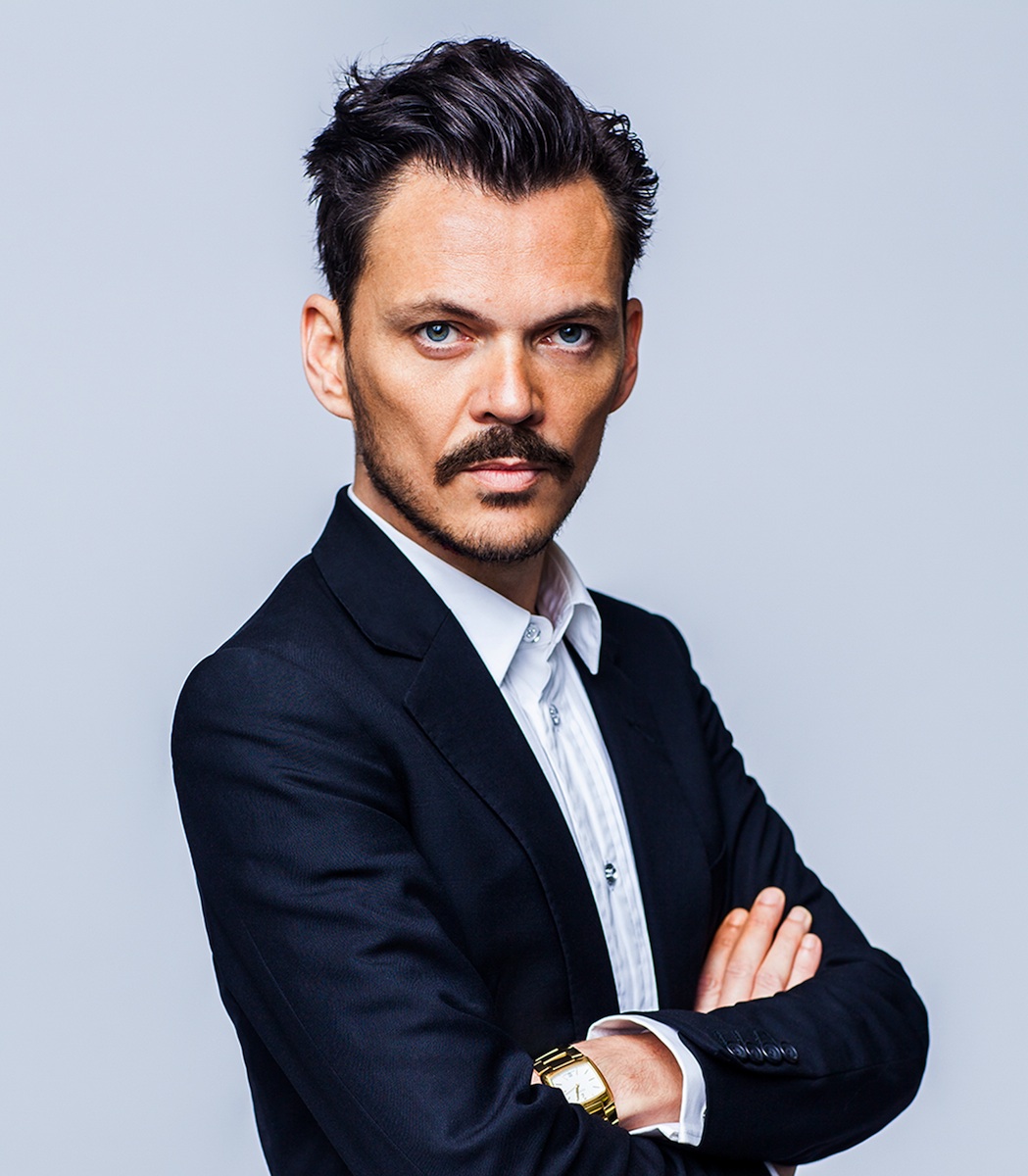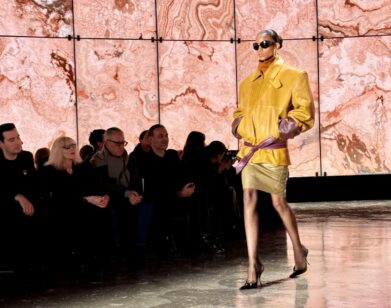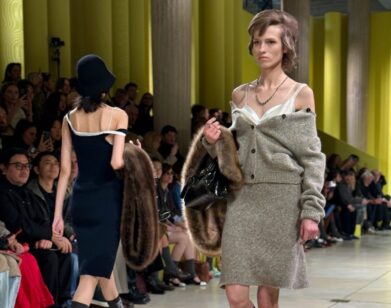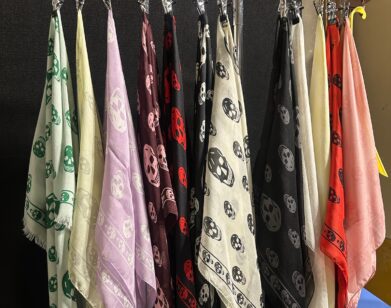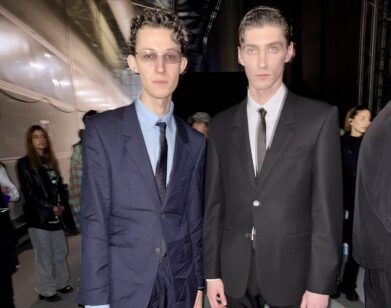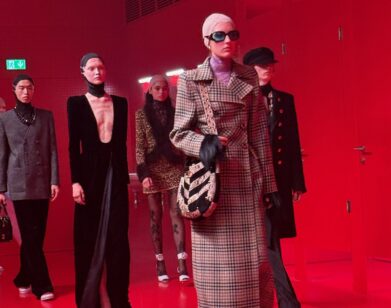Matthew Williamson 2.0
Fashion is often reduced to defining moments—which is too limiting in attempting to describe the vision of British-born Matthew Williamson. Since his entrée onto the fashion landscape back in ’97, he’s shown he’s an instinctive player, eschewing the grunge aesthetic of the era for a mark-making “Electric Angels” collection of kaleidoscope color, embellishment, and unabashedly pretty dresses. After 16 years, these features are still essential Williamson, buffeted by his unerring vision, affinity with female form, and an unapologetic embrace of a laid-back glamour and bohemian attitude.
On the brink of his Spring/Summer 2014 collection at London Fashion Week, “a new chapter,” taking place at Saatchi Gallery, there’s plenty more of this tale to be told. His eclectic patchwork and collage designs have retained the loyalty of an impressive list of model and actress fans. His is an enchanting, luxurious world where style and lifestyle interlace. “I don’t see myself as a pure fashion designer sending dress after dress down the runway,” he says, “but about wanting those watching my shows to aspire to a certain lifestyle.”
Today, there’s a fresh excitement in the world of Williamson, with collections showing a new, matter-of-fact interpretation of the modern bohème, more refined tailoring, and expansion of categories by way of a bag collection, a collaboration with the heritage knitwear label Ballantyne, and a series of wallpaper prints and fabrics sold through Osborne and Little. A newly launched website has offered Williamson a chance to shed his self-professed technophobia and present his own intimate story daily.
This conversation took place with Williamson in his West London studio, a few days before his show on Sunday. He explained why he now feels it is his job to suggest to those who have made their minds up about his creations: “Take a second look, you might have not seen it all.”
DAVINA CATT: With 15 years behind you, how are you feeling now—like it’s a new chapter, a reckoning?
MATTHEW WILLIAMSON: Yeah it’s definitely a stretch of time. It is a milestone in British fashion—it is something to be proud of so last year seemed like a timely moment to take stock, celebrate the point we had got to. Following that, it feels like time to look at things from different perspectives—we are 16 now!
CATT: Do you find the early ideas still ingrained now—just that you realize it differently through experience and understanding? Do you still look back at old sketchbooks, refer to early material?
WILLIAMSON: I don’t think I’ll ever not look back. I think I started out 16 years ago with reasonably clear ideas of what I wanted to do, and some of those still ring true—the show on Sunday even has some reference to the first, “Electric Angels.” Those brand DNA blocks still remain relevant. I’m still dressing the same kind of woman—one can loosely define that girl as free-spirited and with a bohemian sensibility—she might just be more refined now.
CATT: Your signature aesthetic has largely revolved around the use of bright color, bubbly prints, and embellishment. But your stuff is also so much about attitude, female form, intrinsically understanding what women want to wear. How did you come to this aesthetic?
WILLIAMSON: I don’t think I actually tried too hard to analyse it. When you start something creative for the first time, you are completely free, no real influences other than your own vision. But ultimately I think I learned a lot from my mother—the way she used fashion to make herself feel better; it was a tool she had and she used it very well. Fashion for her wasn’t so far as an escape, but certainly a time where she would sit on her own and prepare what she wanted to wear the next day—it turned into bit of a ritual. I remember witnessing how pleasurable fashion as a way was for her and she reaped the rewards for that—men fancied her and women wanted to be her! I was fascinated by how she did it.
CATT: With this whole globalized, democratic fashion world where everything is now about newness and the instant—do you ever feel like there is pressure on you to alter your vision, concept of design to accommodate that?
WILLIAMSON: Not really with my design process. I think the biggest shift is the way people look at and have access to fashion. As you say, it is instant—it’s already old the minute you’ve seen it, and we’ve already moved on. Fashion has become very in and out. Back in the days when I started, you would wait for Vogue to come out, and that is where you would see what people wore that month. Now we are looking at what someone is wearing this second. So yes, it’s a different way; that hasn’t affected the way I design, but it has affected the demands on business—as I’m sure you find, you are not just a journalist, I’m not just a designer—now you are making videos, you are tweeting, you are doing all these other things that weren’t part of it before.
CATT: And you’ve recently started up your own Instagram account, are relaunching your website, and have been collaborating with conceptual artist Kyle Bean on an evolving store window display. So what have you been observing about the direct engagement now possible between designer and consumer?
WILLIAMSON: I don’t think it is anything but positive, really. Yes, there is a lot of noise, but I feel the key is to try and make the noise we are shouting have some sort of meaning. What I’m starting to put out is things with integrity—I feel there’s a way to do it. So Wednesday, this week, we launched the new website—I have spent 18 months daily working on it. It’s not just a cobbled-together site—it’s got a lot of thought behind it. The idea behind it simply being that if someone logs on to look at what I do, with any intention to purchase, then what we are showing you on the site should give you a real sense of who we are. There is no chance for misquotes as, if you speak to a journalist, you can get misquoted or seen through their eyes. So this is just me saying, “I am thrilled you’ve logged on, and because of that, I am going to show you something no one else can show you!” So there’s a Shop and Collection part, and then we have launched a section called “MW Daily” which will be a constant, daily news feed. I’ve really focused on considering what you might really want to know about Dress X if you are going to buy it, which you wouldn’t get from purchasing the dress on a different site. We have also got a few vignette-like films running to promote the web launch, which are really cool—I’ve used a model, Molly, who I love working with; it’s just about a girl doing her thing in the studio, but it’s nicely chopped together and colored.
CATT: This issue of Interview is the Model Issue, seven iconic supermodels with covers shot by Mert and Marcus. I think it’s Naomi Campbell who remarks on the shift in the relationship between models and designers—the lack of closeness which there used to be. As a designer who’s had an ongoing close relationship with models, how do you see this shift in communication or image?
WILLIAMSON: Well, that was such a seminal moment in world of modeling—I don’t think we’ve seen it since. Will we see it again? I don’t know. It is now in a different place. You have Cara [Delevingne] and her legions of fans—it’s a different way, she’s idolized because she’s a beauty but asking you to enter her world. She’s saying, “I’m a geek, I’m wearing a beanie hat and I’m normal.” So I think that’s the shift: back in Naomi’s day it was about gloss and glamour, whereas now other young women look at it like, “Well, I’ve got a beanie hat, so I could too be Cara Delevingne.” I think, importantly, the two can still run concurrently, though—you still have the printed, glossy images but you also have younger generation who are capturing a much younger audience that we’ve ever seen in fashion. I read someone did a poll on British kids recently, asking them what was their most desired job when they grew up, and fashion designer was top, bizarrely to me!
CATT: Going back to your collection starting points; it’s always been quite visual with you, not narratively based, and from exotic locations you’ve moved into referencing bold artistic interpretations—isn’t Spring/Summer 2014 looking at pop artist Keith Haring?
WILLIAMSON: Yeah, I just saw some of Keith Haring’s work and it correlated with my thoughts at the time, back when I started on this collection in March. I generally was drawn to the hand-done approach and made me think that I was kind of bored of the prints happening—the placements, mirrors, computer-generated aspect—and felt it had run its course. So that dovetailed with this artist and the ideas of returning to pen, paper, and paintbrush. The prints for this collection even look childlike—the main thrust is they’ve all been hand-drawn or painted.
CATT: What are your hopes for this next chapter, and what’s most scaring you?
WILLIAMSON: I love what I do and feel really lucky to still love what I do—I want to get out of bed and go to work at least three out of five days a week! My fear is it ends up any less than three days [laughs]. But design-wise, I’ve still got an appetite, a lot more I want to say with my work—the story is not nearly complete!
MATTHEW WILLIAMSON’S SPRING/SUMMER 2014 COLLECTION WILL SHOW THIS SUNDAY, SEPTEMBER 15, AT SAATCHI GALLERY AT LONDON FASHION WEEK. FOR MORE ON THE DESIGNER, VISIT HIS WEBSITE.

